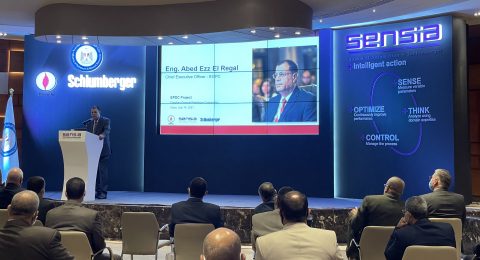As the crude oil prices are tremendously increasing; jumping above the $100, the development economics are totally changing. Minor, and mature or Brown Fields assets have considerable economic value evolved dramatically. Given the fact that technology is evolving exponentially enough to support non traditional hydrocarbon assets development, and to extremely pushing the recoveries to the highest limit
As the energy demand is growing world wide, the hydrocarbon suppliers are taking the role to fulfill the market consumption. Given the fact that the huge oil discoveries are diminishing, increasing recoveries from the existing g assets would be a valuable compensation parameter to equalize the demand and supply equation.
In this regard, this article highlights the evolution of Brown Fields development and redevelopment world wide and the technical efforts exerted in this area.
Key Challenges
Brown Field development is not an easy task, and has many challenges to overcome. In my perception, the key challenge is the organization; it should be mindset to managing mature fields as apposed to the current mindset organization to green field management.
In the technical side, the pressure depleting reservoirs have many challenges. For example, in the production performance side; drop of production rates due to draw down decline, and skin factor increasing in the positive direction due to gas saturation increasing around the well bore.
Pressure depletion of the reservoirs has negative impact on Ultimate Recoveries, and consequently has negative effect on the economics. Meanwhile, the reservoirs performance monitoring in pressure depleted horizons has technical challenges and limitation, such as pressure transient analysis of two phase flowing, which make the analytical interpretation has some limitation and might be not so accurate.
Role of the Economics
Economics are playing a very important role in the reserves estimation. For instance, the proved reserves definition has been stated by Security and Exchange Commission (SEC) as “the estimated quantities of hydrocarbon, which the geologic and engineering data demonstrate with reasonable certainty to be recoverable over the future years from known reservoirs under existing economic conditions”, while the Society of Petroleum Engineering (SPE) defines it as the quantities of petroleum, which, by analysis of geological and engineering data, can be estimated with reasonable certainty to be commercially recoverable.
Technically, the definition is almost identical for both of them, but economically, there is a considerable major difference which consequently generates two different “proved reserves values” for the same reservoir.
The major difference is that (SEC) are valuating the reserves based on the current existing economic conditions, while (SPE) are using forward estimation and forecasting of economic conditions.

Reserves Reporting
World Petroleum Congress (WPC) and Society of Petroleum Engineering (SPE) are supporting the use of Probabilistic Approach to estimate hydrocarbon reserves rather than deterministic approach of estimation.
In the probabilistic approach, parameters are used in ranges with certain distribution shapes rather than fixed values. 1P is defined as the proved reserves, which have probability of 90% to be recovered, while 2P is the probable reserves which have 50% probability to be recovered, and 3P is the possible reserves, which have probability of 10% to be recovered.
It is very important to notice that, from the plot below, 2P is including 1P, and 3P is including 2P.
In this regard, it is worth mentioning that, the hydrocarbon volumes are not considered reserves, unless they have the following conditions;
-
Volumes are economically producible using current available technology
-
For the operator, these volumes are producible within the license or the agreement period
-
Production levels are not constrained by market conditions and demand
-
Producing volumes are complying with the government regulations
-
Volumes to be recovered in economical basis following the terms and conditions of the agreement.
Lot of appreciable efforts has been exerted by the E&P contractors, service providers, the scientific organizations, and the economists to evolve and maximize the value of the Brown Fields assets in the favor of the supply and demand market.
One example of Brown Field development is Amal field, which entered production phase late 1988, and its oil production peak was in the average of 6500 bopd, and gas production peak was 23 mmscf/d. Since then, the field experienced continuous decline until 2007, when a development plan has been implemented and achieved positive impact on the field production performance.
As shown in the production plot of the subject field, the oil rate was in the level of 8500 bopd, and the development plan is targeting daily oil rate of 15000 bopd, and 70 mmscf/d of gas daily rate as production plateau.

At the end, the key points of this subject can be summarized in the following;
-
Mature hydrocarbon fields have considerable positive values
-
Data surveillance is playing very important role in recognizing opportunities in mature fields
-
Reserves tracking, updating, and classification are important to recognize new opportunities
-
Economic environment and contracting terms and conditions are playing very important roles in the development of Brown fields
-
Organization style and integrated disciplinary work are key factors in new opportunities successful development
By: Eng. Ahmed Hassan
Chief Reservoir Engineer, Pico International Petroleum







